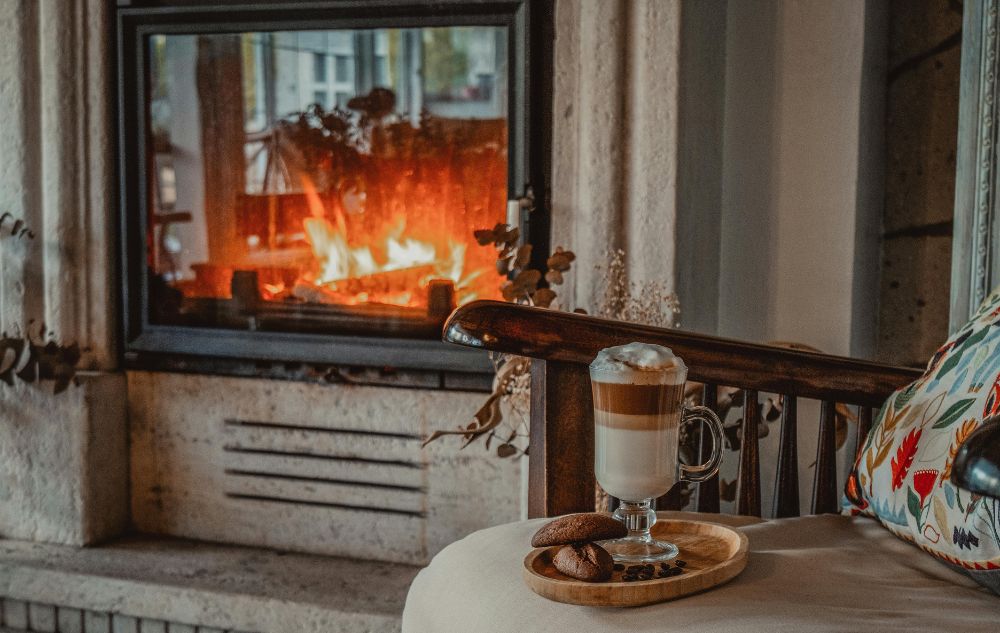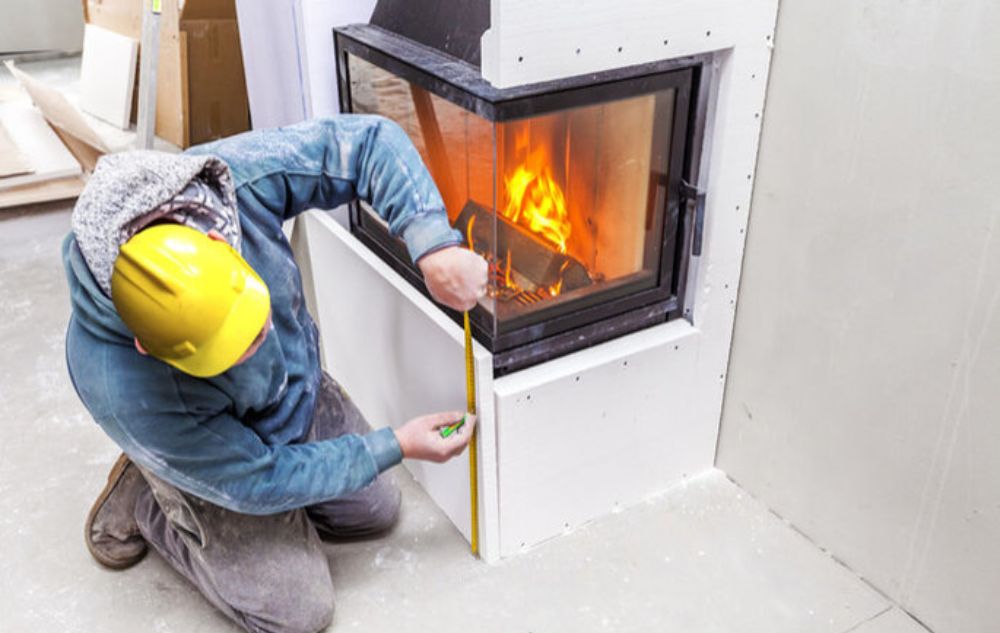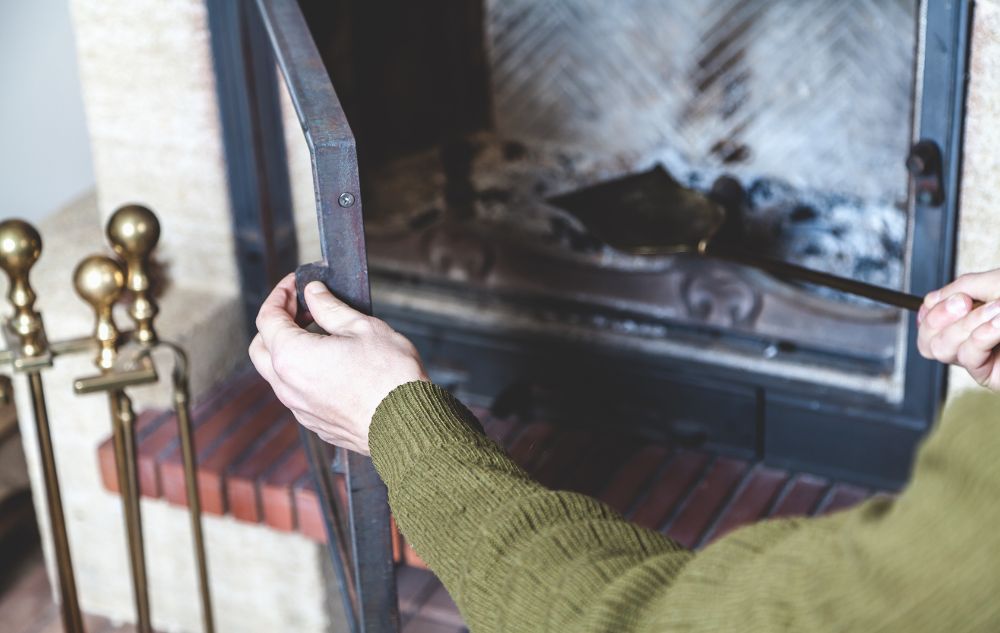Wood Burning Fireplaces: Everything You Need to Know Before Buying
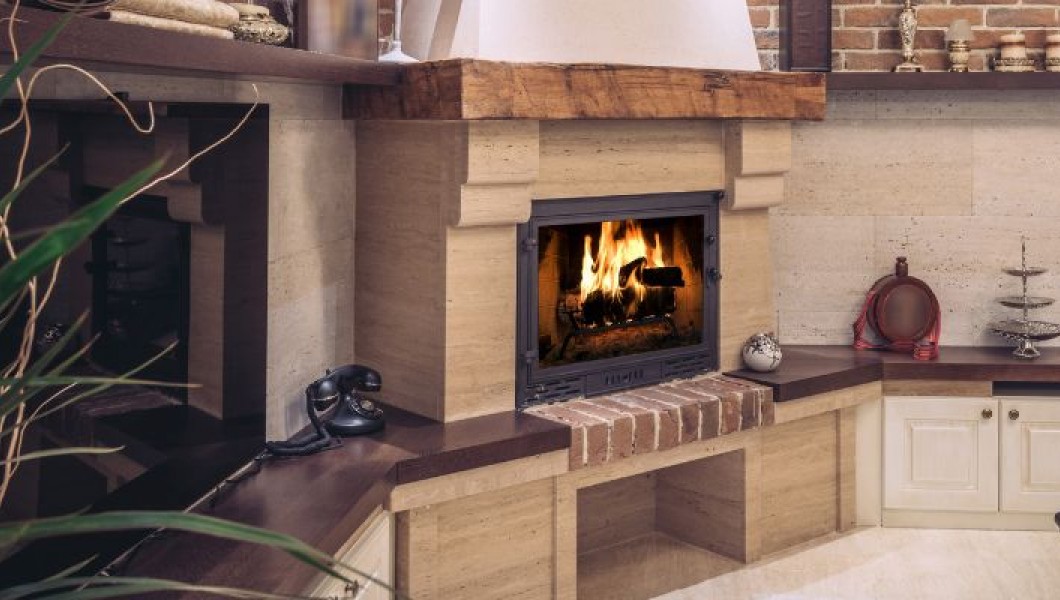
History of Wood Burning Fireplaces
Fireplaces inserts have a long and rich history that dates back to ancient times. In Ancient Rome, wealthy homes and public buildings featured primitive built-in hearths, often connected to sophisticated underfloor heating systems known as hypocausts. These systems used the heat from burning wood to warm the floors and walls of buildings.
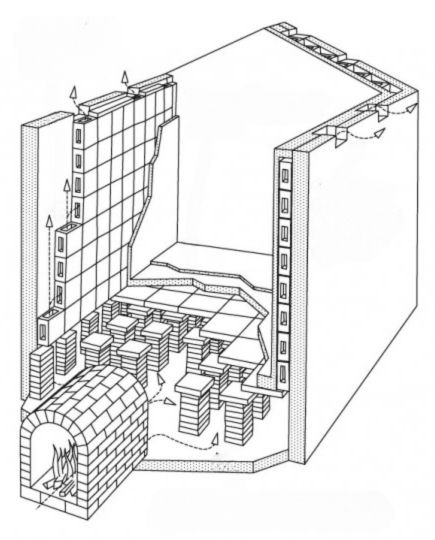
During the Middle Ages, when stone castles dominated Europe, fireplaces began to be built directly into the walls, with chimneys designed to direct smoke outside. During this period, chimneys were significantly improved, with England and France adopting better-designed flues that enhanced draft and reduced indoor smoke.
In the 17th and 18th centuries, the first attempts to improve fireplace efficiency emerged. One of the most significant contributions in this field was the work of Benjamin Franklin, who created the "Franklin stove," an advanced fireplace model that provided better heat distribution and more complete wood combustion.
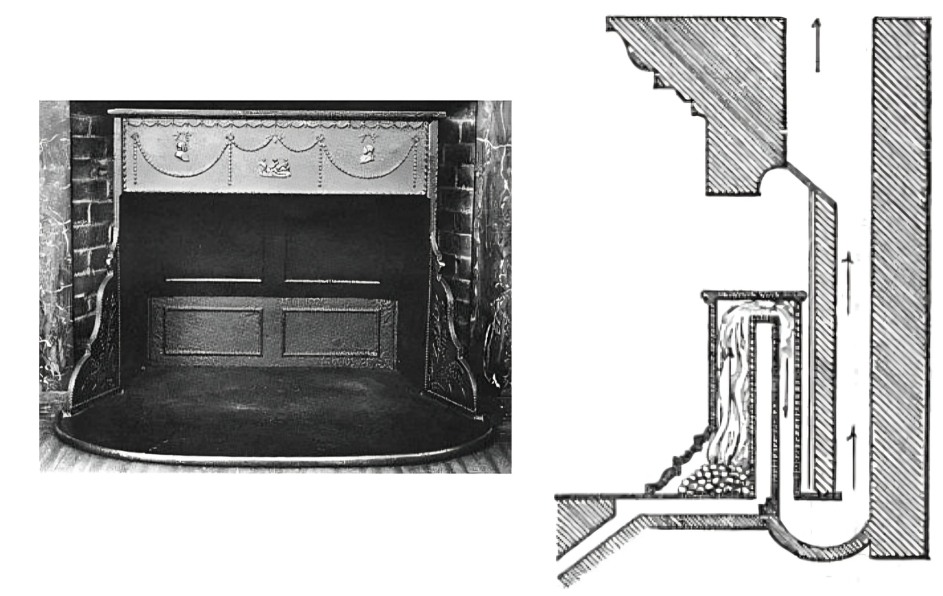
At the same time, France and Germany began using the first closed combustion chambers, which retained more heat and reduced energy loss. In the Louvre and Versailles, fireplaces were not only a source of warmth but also works of art. They were adorned with elaborate Baroque ornaments carved from marble, bronze, and gold, symbolizing the power and refinement of the French monarchy.
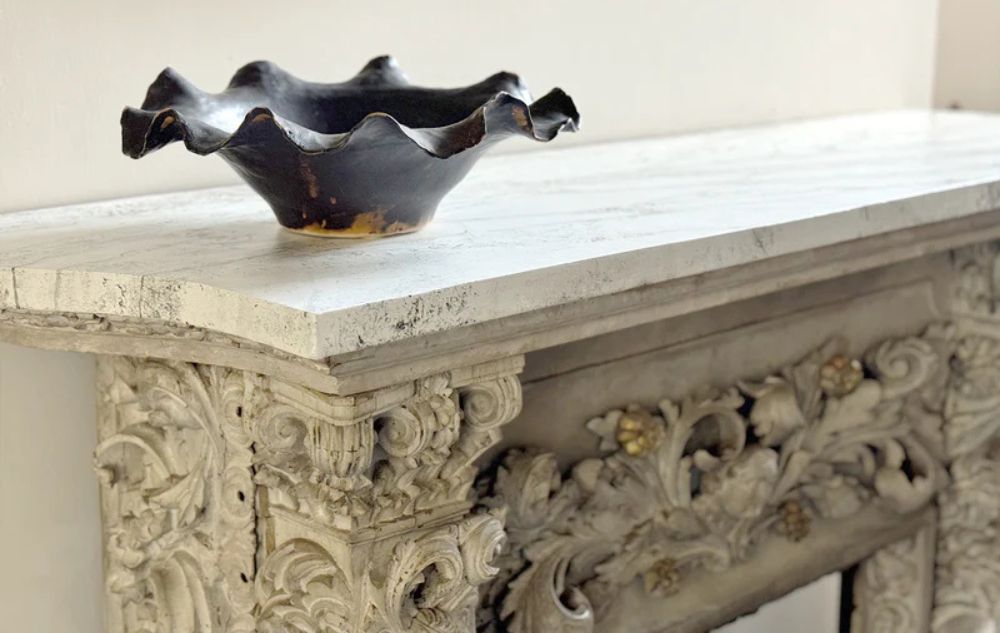
In the 19th century, with the advancement of the Industrial Revolution, mass production of cast iron and steel components for fireplaces began. This made it possible to produce more compact and efficient built-in fireplaces, which became more affordable for households. By the end of the century, engineers experimented with different shapes and structures of combustion chambers to optimize the burning process.
In the 20th century, especially after World War II, wood burning fireplaces underwent significant improvements. With the development of new materials and technologies, models with double and triple combustion were introduced, which reduced harmful emissions and improved energy efficiency. In the 1970s, in response to the global energy crisis, companies started developing fireplaces with higher thermal efficiency and the ability to connect to water heating systems, allowing for whole-house heating.
Today, modern wood burning fireplaces combine the traditional coziness of a burning fire with advanced technologies for fuel savings and reduced emissions. Manufacturers use secondary and tertiary combustion systems that increase efficiency above 70%, with some models reaching even 80-85%. Additionally, many of today’s fireplaces are equipped with glass-ceramic doors that retain heat, prevent smoke spread, and ensure safer operation.
In recent years, growing environmental awareness has led to the introduction of strict European regulations such as Ecodesign 2022, which require lower carbon emissions and more efficient fuel combustion. Thanks to these innovations, wood burning fireplaces today are not only a source of warmth and comfort but also one of the most efficient and environmentally friendly heating solutions for homes.
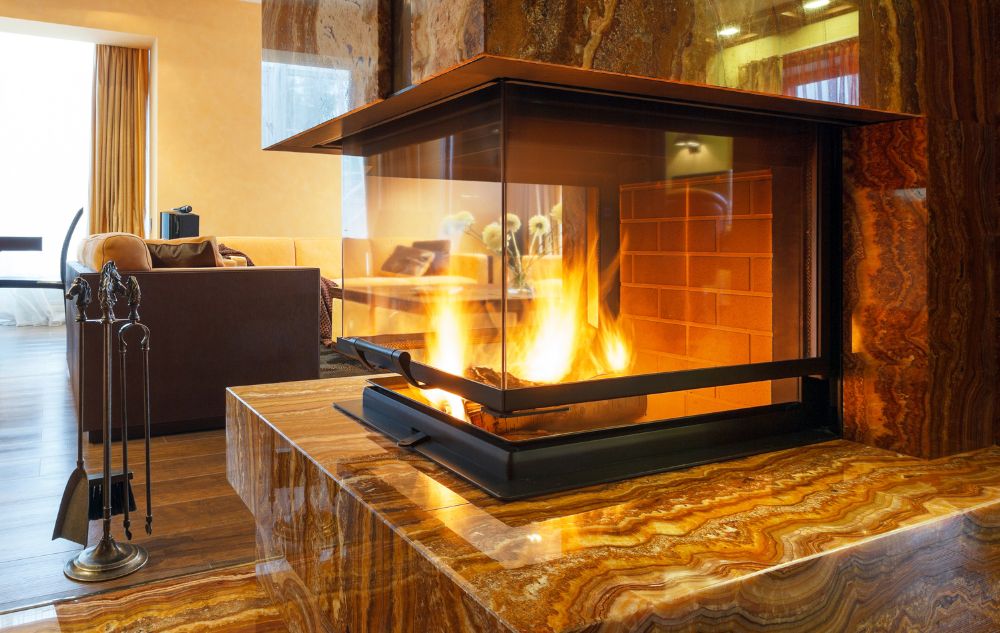
Types of Wood Burning Fireplaces
Choosing the right fireplace model depends on your needs, budget, and expectations for efficiency. Depending on the type of heating, they are divided into:
Natural convection Fireplaces Inserts
Natural convection fireplaces are the simplest and most traditional option. They operate by directly radiating heat into the room without incorporating complex heating systems.
Advantages:
- Easy installation – does not require a water jacket, radiators, or complex infrastructure.
- Affordable price – cheaper compared to fireplaces with a water jacket.
- Quick heating – starts emitting heat immediately after ignition.
- Suitable for small and medium-sized rooms – effective for compact spaces.
- Minimal maintenance – no additional water systems for cleaning and maintenance.
Disadvantages:
- Limited heat distribution – only heats the room where it is installed.
- Shorter heat retention – temperature starts to drop after the fire goes out.
Back Boiler Fireplaces
These fireplaces can be integrated with a central heating system. They use the heat from burning wood to heat water, which then circulates through radiators or underfloor heating.
Advantages:
- High energy efficiency – utilizes heat to warm the entire house.
- Even heat distribution – heated water circulates in different rooms.
- Long-term cost savings – reduces heating expenses.
- Compatible with other heat sources – can be combined with solar panels or gas boilers.
Disadvantages:
- More complex installation – requires a water system and radiator connection.
- Higher initial investment – includes costs for water installation.
- Requires regular maintenance – checking for leaks, cleaning the chimney, and heat exchanger.
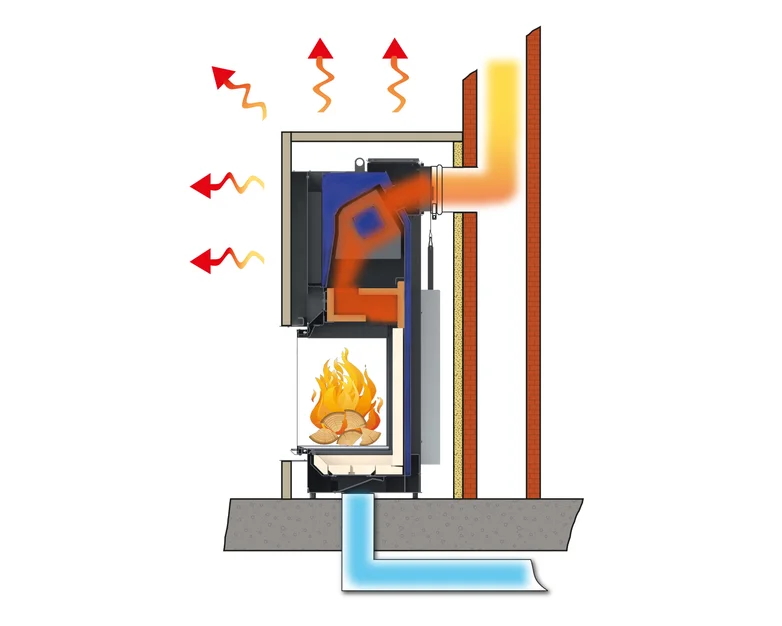
Some fireplace models are made from cast iron, which has excellent heat retention. This means that the fireplace holds heat for a longer time and continues to emit warmth even after the fire has gone out.
Advantages:
- Exceptional durability – resistant to high temperatures and long-term use.
- Good heat retention – continues to emit heat after the fire goes out.
- Classic and aesthetic appearance – adds an elegant style to the interior.
- Suitable for intensive use – can be used daily without risk of damage.
Disadvantages:
- Heavier than other types of fireplaces – may require additional structural reinforcement.
- Longer heating time – heats up more slowly compared to steel models but retains heat longer.
- Requires regular maintenance – needs frequent cleaning to prevent soot buildup and corrosion.
Advantages of Wood Burning Fireplaces
Wood burning fireplaces are much more than just an aesthetic element in the home. They offer numerous benefits that make them a preferred choice for many households. Let’s explore these advantages:
1. Cost-Effectiveness
Wood burning fireplaces are one of the most cost-efficient heating solutions, providing an optimal balance between initial investment, operating costs, and long-term savings.
High Energy Efficiency
Modern models are designed to extract the maximum amount of heat from the fuel by utilizing technologies such as secondary and tertiary combustion. This results in efficiency of over 70%, significantly higher than traditional open fireplaces, which convert only 10-20% of the wood’s energy into heat. Thanks to well-insulated combustion chambers and heat recirculation systems, heat losses are minimal, contributing to the cost-effectiveness of this heating method.
Comparison of Fireplaces Inserts with Different Energy Efficiencies
| Type of Fireplace | Energy Efficiency (%) | Used Energy from Wood | Lost Energy | Wood Consumption (kg/hour) | Potential Savings* (%) |
|---|---|---|---|---|---|
| Modern Fireplace (Efficiency above 70%) | 75% - 85% | More than 3/4 of the energy is converted into heat | 15% - 25% | 2 - 3 kg | Up to 40% lower wood consumption |
| Traditional Open Fireplace | 10% - 20% | Only a small portion of energy is used efficiently | 80% - 90% | 5 - 7 kg | Significant heat loss, high costs |
| Older Built-in Fireplace (Efficiency 40%-50%) | 40% - 50% | Nearly half of the energy is utilized | 50% - 60% | 3.5 - 5 kg | Up to 20% higher consumption compared to modern models |
Low Operating Costs
Firewood is one of the most affordable energy sources, especially when compared to electricity, gas, or pellets. Additionally, if you have access to your own wood supply, fuel costs can be minimized.
Reduction of Electricity and Gas Bills
Using the fireplace as a primary or supplemental heating source significantly reduces dependence on central heating. This leads to lower electricity and gas bills, especially during transitional seasons when full home heating is not required.
Long-Term Investment
High-quality built-in fireplaces are made from durable materials such as cast iron, steel, and ceramics, ensuring a long service life. Apart from regular cleaning and occasional chimney inspections, they require minimal maintenance, further reducing long-term costs.
Energy Independence
Wood burning fireplaces do not rely on electricity or gas, making them a reliable heating solution for areas with high energy prices or frequent power outages. This ensures security and comfort even in emergency situations.
Comparison with Other Energy Sources
To fully understand the economic benefits of wood burning fireplaces, it is useful to compare them with other energy sources.
|
Energy Source |
Cost per Energy Unit |
Efficiency |
Long-Term Costs |
| Firewood | Low | High | Low |
| Electricity | High | Medium | High |
| Gas | Medium | High | Medium |
| Pellets | Medium | High | Medium |
As shown in the table, firewood is the most economical choice, especially if you have access to cheap or self-sourced wood.
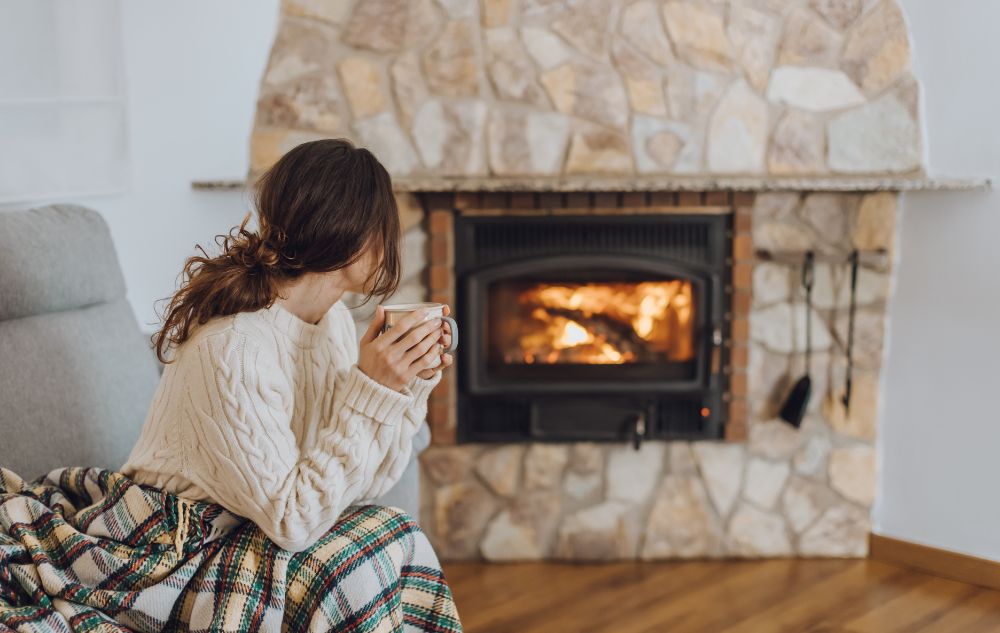
2. Environmental Friendliness
Wood burning fireplaces are a sustainable and eco-friendly heating solution that reduces environmental impact compared to other energy sources. Modern models are designed to minimize carbon emissions and utilize fuel more efficiently, contributing to cleaner air and a lower carbon footprint.
Low Emissions and High Efficiency
Although burning wood releases CO₂, modern fireplaces significantly reduce harmful emissions compared to older models. They comply with strict environmental standards set by the European Union, such as Ecodesign 2022, which requires efficiency of over 75% and particulate emissions below 40 mg/m³. This means they provide more heat with less fuel and minimal air pollution.
Reducing the Carbon Footprint
Using wood as a renewable energy source reduces dependence on fossil fuels like coal and natural gas, which generate large amounts of CO₂ and other pollutants. Additionally, responsible reforestation and sustainable forest management can offset carbon emissions, making this heating method carbon-neutral.
Recyclability and Minimal Waste
The ash left after burning wood is not waste—it is rich in potassium, calcium, and magnesium, making it an excellent natural fertilizer for gardens. Furthermore, since wood is a natural material, its combustion does not produce toxic residues, unlike some other types of fuel.
3. Aesthetics and Comfort
Built-in fireplaces not only provide heat but also add a unique charm and ambiance to the interior, becoming a central decorative element.
- Visual Warmth – Dancing flames create a sense of comfort and relaxation.
- Variety of Designs – Available in various styles, from classic to modern minimalist.
- Social Focal Point – The fireplace becomes a natural gathering place for family and friends.
How to Choose the Right Wood Burning Fireplace?
Choosing a fireplace depends on several factors that should be carefully considered to make the best choice for your home and needs. Let’s explore these factors in detail:
Room Size
For larger rooms and open spaces, it is crucial to ensure sufficient heating power. In this case, fireplaces with a water jacket can be an ideal choice, as they allow heat to be evenly distributed throughout the home via radiators or underfloor heating. On the other hand, cast iron fireplaces are suitable for medium-sized rooms, retaining heat longer and creating a cozy atmosphere.
The following table shows the approximate required fireplace power for different living areas:
| Living Area (sq. m) | Required Power (kW) |
|---|---|
| up to 40 | 10 |
| 40-60 | 12 |
| 60-80 | 14 |
| 80-100 | 16 |
| 100-120 | 18 |
| 120-140 | 20 |
| 140-160 | 22 |
| 160-180 | 24 |
| 180-200 | 28 |
| 200+ | 32 |
Interior Design
It is essential that the fireplace blends harmoniously with the overall home interior. Modern fireplaces, often featuring clean lines and glass doors, complement contemporary décor and can serve as a focal point in minimalist interiors. For classic interiors, cast iron fireplaces with ornate details add a sense of vintage charm and aristocracy.
Budget
Price plays a crucial role in choosing a fireplace. Dry fireplaces are generally more affordable and easier to install, making them a good option for those on a limited budget. However, investing in a fireplace with a water jacket can pay off in the long run through lower heating costs, especially if you already have a built-in heating system.
Frequency of Use
If you plan to use the fireplace as your primary heating source, it is advisable to choose a durable model, such as a cast iron one, which can withstand prolonged operation and high temperatures. However, if you plan to use it mainly for decorative purposes or occasionally, you can opt for lighter and more budget-friendly models.
Environmental Impact and Energy Efficiency
Nowadays, more people are paying attention to the environmental aspect. Look for models with high combustion efficiency that reduce emissions of harmful substances and help protect the environment. Some modern fireplaces feature a secondary combustion system that optimizes burning and increases efficiency.
Easy Maintenance
Last but not least, consider maintenance. Fireplaces with easy access to the ashtray and convenient glass cleaning systems will save you time and effort. Also, check for the availability of spare parts and the warranty period of the selected model.
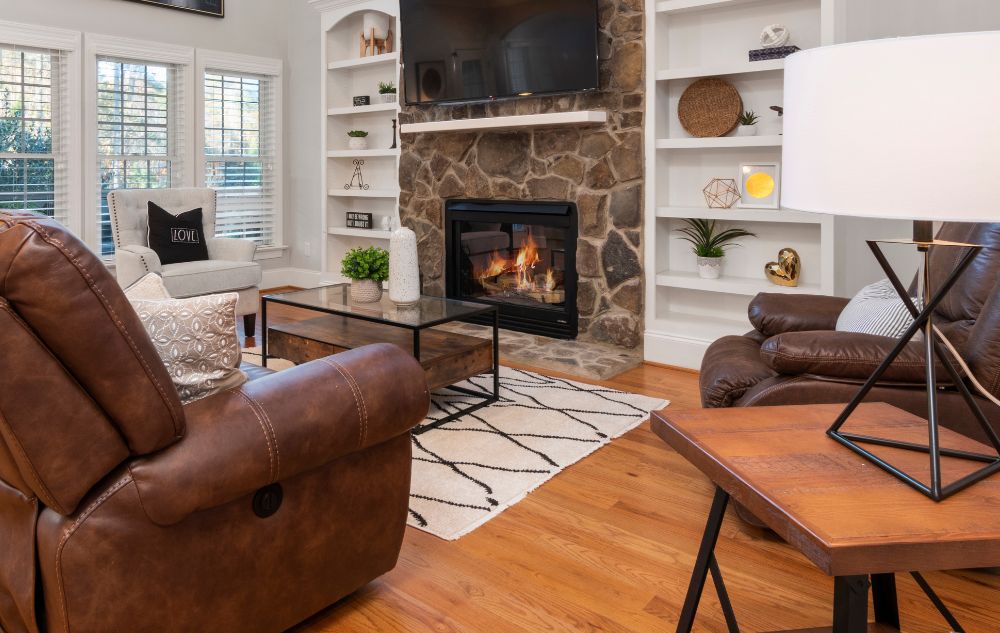
Installation of Wood Burning Fireplaces
The installation of a wood burning fireplace should be carried out by a professional to ensure safety and efficiency. Here, we will go through the individual steps of the process.
Preparation
Before starting the installation, it is important to prepare properly. This includes choosing a suitable location and preparing the space with fire-resistant materials.
Choosing the Right Location
- The fireplace should be placed in a location that allows easy access to the chimney.
- Ensure sufficient space around the fireplace for safety and maintenance.
- Consider the arrangement of furniture and interior design to ensure the fireplace becomes a focal point in the room.
- Prepare the space with fireproof materials such as ceramic tiles, bricks, or fire-resistant panels.
- Make sure the floor is stable and can support the weight of the fireplace.
Installation Steps
The installation of a built-in fireplace involves several key steps that need to be carefully executed.
Building a Stable Base
The fireplace must be placed on a stable and fire-resistant platform to ensure safety and durability.
The base should be slightly larger than the fireplace to provide additional protection.
Connecting to the Chimney
Proper connection of the fireplace to the chimney is essential for efficiency and safety.
- Ensure that the chimney is clean and in good condition. If necessary, hire a professional for cleaning and inspection.
- The chimney should provide good draft to prevent smoke from returning into the room.
- Use appropriate pipes and fittings to connect the fireplace to the chimney. Ensure that all connections are tight and secure.
Insulating Surrounding Walls
The surrounding walls should be insulated with heat-resistant materials to prevent overheating and fire hazards.
- Use fire-resistant panels, mineral wool, or specialized insulation materials.
- Ensure that the insulation is of adequate thickness to provide maximum protection.
- The insulation should be installed tightly and without gaps.
Installing Ventilation Openings
Ventilation openings are important for improving air circulation and fireplace efficiency.
- They should be positioned to ensure optimal airflow.
- Ensure that the openings are of appropriate size to allow sufficient airflow.
- Some fireplaces offer the option to adjust ventilation openings, allowing control over the intensity of combustion.
Final Cladding and Decoration
Once the fireplace is installed, it is time for the final cladding and decoration.
You can use different materials that complement your interior, such as:
- Stone – for a natural and luxurious look.
- Bricks – for a traditional and cozy style.
- Wood – for warmth and a rustic effect.
- Decorative panels – for a modern and elegant design.
Maintenance and Cleaning
Proper maintenance of a fireplace insert ensures not only its effective operation but also home safety. Regular cleaning and periodic maintenance extend the fireplace's lifespan, reduce the risk of soot buildup, and prevent potential ventilation issues.
Regular Maintenance
To keep the fireplace operating optimally and safely, it is important to follow a few key maintenance steps:
Cleaning the Glass
The glass of the fireplace can become sooty and stained from combustion residues, reducing visibility and aesthetic appeal. Regular cleaning with specialized cleaners or home solutions (such as a mix of water and vinegar) helps maintain its transparency. Using dry wood with low moisture content (below 20%) reduces glass contamination.
Removing Ash and Soot
Accumulated ash can reduce combustion efficiency and hinder airflow. It is recommended to remove it regularly using a metal shovel and ash pan. If the fireplace has an ash container, it should be cleaned after several uses.
Inspecting the Chimney Flues
Chimney flues should be regularly inspected for soot buildup or blockages. Poor draft can cause smoke to enter the room and decrease combustion efficiency. If necessary, special cleaning pellets or chimney brushes can be used.
Checking the Seals
The seals on the door and other fireplace components ensure proper system functionality and prevent smoke leakage into the room. They should be checked regularly for wear and replaced if needed.
Annual Maintenance
In addition to regular upkeep, a thorough annual inspection of the fireplace and its components by a specialist is recommended. This ensures not only its efficiency but also home safety.
Professional Chimney Inspection
It is crucial to have the chimney inspected for blockages, tar buildup, or structural damage. Over time, dangerous substances can accumulate, increasing the risk of chimney fires.
Replacing Seals if Necessary
With prolonged use, the seals around the door and chimney pipes may deteriorate. If needed, they should be replaced to ensure good insulation and efficient combustion.
Professional Fireplace Cleaning
Once a year, a professional cleaning of the fireplace is recommended, including deep cleaning of the combustion chamber, chimney pipes, and internal components. This improves combustion efficiency and extends the fireplace’s lifespan.
Possible Problems and Their Solutions
Poor Draft
Causes: Clogged chimney, improper installation, or insufficient airflow.
Solution: Check and clean the chimney, ensure additional ventilation. Use a chimney cap to improve airflow. Inspect for possible leaks in the flue system.
Smoke Entering the Room
Causes: Insufficient air supply, improperly designed chimney, strong wind pushing smoke back inside.
Solution: Provide additional ventilation by installing air ducts. Adjust chimney openings and install a deflector to stabilize draft. Check for obstructions in the chimney.
Fast Burning of Firewood
Causes: Lack of control over airflow, using overly dry wood, improper damper regulation.
Solution: Adjust intake dampers to control air supply. Use wood with optimal moisture content (around 15-20%). Check the fireplace door seals to prevent excessive air intake.
Overheating of the Fireplace
Causes: Poor insulation, incorrect fireplace size for the room, excessively intense burning.
Solution: Ensure the fireplace is the right size for the room. Use insulation materials to prevent overheating. Adjust the intensity of burning by using air dampers or installing a deflector to direct heat properly.
Uneven Heat Distribution
Causes: Incorrectly installed or underpowered fan, unsuitable fireplace type for the specific room.
Solution: Check and, if necessary, adjust fans for proper heat distribution. Choose a fireplace with the appropriate capacity for the area it needs to heat. If the fireplace does not distribute heat effectively, additional heating elements such as convectors can be added.
Soot and Creosote Buildup
Causes: Burning wet or low-quality wood, irregular chimney maintenance.
Solution: Use only high-quality wood with appropriate moisture levels. Regularly clean the chimney and fireplace to prevent the buildup of soot and carbon monoxide. Professional cleaning is recommended at least once a year.
Oxidation and Corrosion of Metal Parts
Causes: Excessive humidity in the room, prolonged exposure to high temperatures without regular maintenance.
Solution: Ensure that the metal components of the fireplace are protected with appropriate coatings to prevent corrosion. Regularly inspect for signs of rust and take necessary actions for replacement or repair of affected parts.
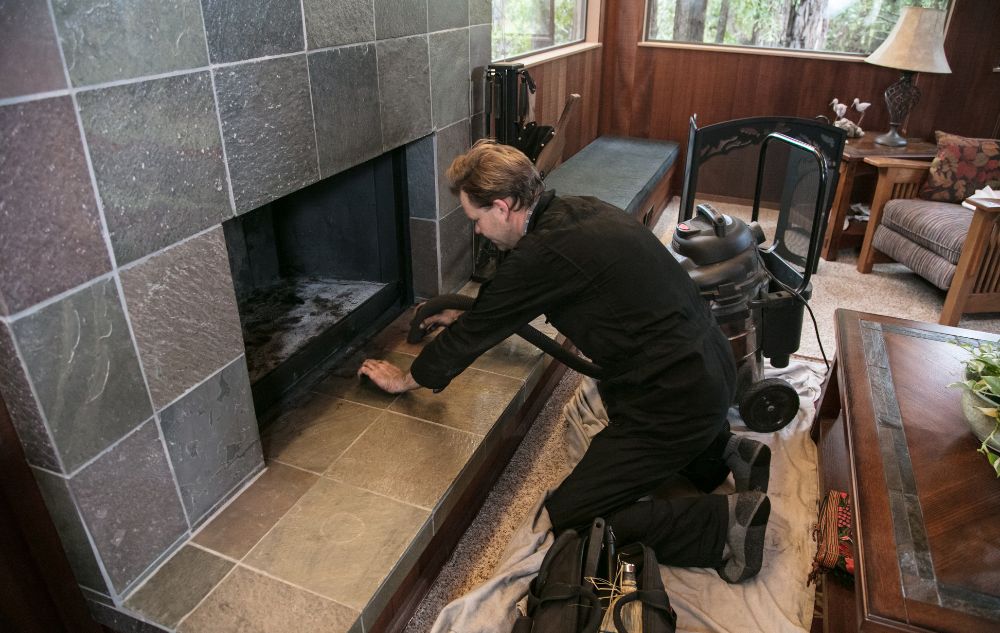
10 Interesting Historical Facts About Wood Burning Fireplaces
- In Japan, traditional "irori" were the predecessors of fireplaces inserts – For centuries, the Japanese used built-in floor hearths called irori, which provided both heat and a place for cooking. They were a central feature in traditional homes until the early 20th century.
- In North America, indigenous tribes built built-in hearths in their homes – Long before the arrival of Europeans, Native American tribes such as the Pueblo in the southwestern U.S. constructed clay houses with built-in fireplaces for heating and cooking.
- The first fireplaces with chimneys appeared in China during the Tang Dynasty (7th-9th century) – The Chinese developed combustion chambers with chimneys to improve heating efficiency in their palaces and temples. These early systems were made of bricks and clay.
- In the 18th century, fireplaces inserts were used for cooking in American colonies – In colonial America, built-in fireplaces were not only a heating source but also the primary means of cooking. Some were large enough to fit whole animals for roasting.
- In 17th-century Holland, fireplaces were lined with ceramic tiles to retain heat better – Dutch artisans began using their iconic Delft tiles as fireplace linings, which retained heat longer and also decorated homes beautifully.
- In Russia, Tsar Peter the Great introduced Western European fireplaces in his palaces – At the end of the 17th century, Peter the Great ordered the installation of modern built-in fireplaces in the Winter Palace in Saint Petersburg, replacing traditional Russian stoves.
- The French developed fireplaces with adjustable dampers as early as the 19th century – Engineers in France were the first to add airflow control dampers to chimneys, allowing longer heat retention and more efficient wood combustion.
- In Renaissance Italy, built-in fireplaces were the center of social life – In Italian Renaissance homes, fireplaces were not just a source of heat but a gathering place for family and guests, often sculpted with elaborate designs and ornaments.
- In Sweden, heat-accumulating fireplaces were developed in the 20th century – In the 1900s, Sweden pioneered the development of heat-retaining fireplaces, made of soapstone or ceramic bricks. These fireplaces stored heat and released it gradually for hours, even after the fire had died down. This design was especially effective for the harsh Scandinavian winters.
- In the early 20th century, due to increasing fires caused by poorly designed fireplaces, various countries began introducing regulations – In Germany, the first rules for minimum distances from combustible materials were established, which are now standard in modern construction.


